"My dear Lord, I have received your letter of the 11th, regarding the Rocket Brigade. The only reason why I wished to have it was to get the horses; but as we are to have them at all events, I am perfectly satisfied. I do not want to set fire to any town, and I do not know any other use of the rockets."
By 1813 the rockets were available in three classes:Heavy Siege Rockets with incendiary carcass weighing over 135kg and 7.6-8.2m sticks; Medium Siege Rockets had a 24-42 pdr (10.9-19.1kg) warhead of shot or shell, a 4.5-6.1m stick and a range of about 3000m; Light Rockets (6-18 pdr (2.7-8.2kg) of shot, case-shot or shell) had 2.4-4.3m stick and a range of about 180 metres.
The rocket cases were made from sheet iron and filled with gunpowder as propellant. The warheads were attached to wooden sticks of differing lengths according to the size of rockets. They could be fired from frames, from specially constructed vehicles or propelled along the ground.
The commander of the Rocket Troop at Waterloo was Captain Whinyates who had served in the Peninsula. At Albuhera, he commanded the half-troop which was attached to the cavalry on the right of the British line. It was here that some of the severest fighting took place. He was mentioned in despatches for his part in the defeat of Lallemand’s cavalry at Ribera on 24th July, 1812. At Waterloo he had three horses shot under him, was struck by a round shot on the leg, and severely wounded in the left arm towards the close of the day.
Wellington only allowed one rocket troop to take part in the Waterloo campaign. Whinyates Troop was equipped with six 12, 18 and 24 pounder rockets.
During the retreat from Quatre Bras, Captain Mercer described their performance thus: "The order to fire [rockets] was given - port/fire applied - the fidgety missile begins to sputter out sparks and wiggle its tail for a second and then darts forth straight up the road. A gun stands right in its way, between the wheels of which the shell in the head of the rocket bursts, the (French) gunners fall right and left, and, those of the other guns taking to their heels ... our rocketeers kept shooting off rockets, none of which ever followed the course of the first: most of them, on arriving about the middle of the ascent, took a vertical direction, whilst some actually turned back upon ourselves - and one of these, following me like a squib until its shells exploded putting me in more danger than all the fire of the enemy ..."
At Waterloo, the Duke had ordered the Troop to substitute 6lb guns for most of the rockets. Eventually, Wellington relented and allowed Whinyates to take 800 rounds as well as the guns. The Rocket Troop had been held in reserve at Waterloo. An account of their actions states the following:
"A party of horse artillery proceeded under Captain Dansey, along the Charleroi Road, to the front of the centre of the Anglo-allied line, and came into action with rockets near the farm of La Haye Sainte, leaving its two guns in the rear under Lt. Wright. Capt. Dansey very soon received a severe wound, which obliged him to retire; and the party, after firing a few rockets, fell back a little to where its horses were standing. It was then commanded by a Sergeant (Daniel Dunnett), who, on perceiving the advance of the nearest French column towards the farm, dismounted his men as coolly and deliberately as if exercising on Woolwich Common, though without any support whatsoever, laid rockets on the ground, and discharged them in succession into the mass, every one of them appearing to take effect. The advance of the column was checked, and not resumed until Dunnett, having expended all his rockets, retired with his party to rejoin the guns in the rear"
Whinyates described his actions at Waterloo as follows: "I was given the order that the Cavalry was going to advance, and that I was to move forward. Colonel Macdonald of the Horse Artillery came up and ordered me to leave my Guns and advance with the Rocket Sections, which I did, down the slope in front of the position.After firing some discharges of rockets I received an order to rejoin the position. I was with
the Troop in the same position from the beginning of the Action until the total rout of the Enemy.”


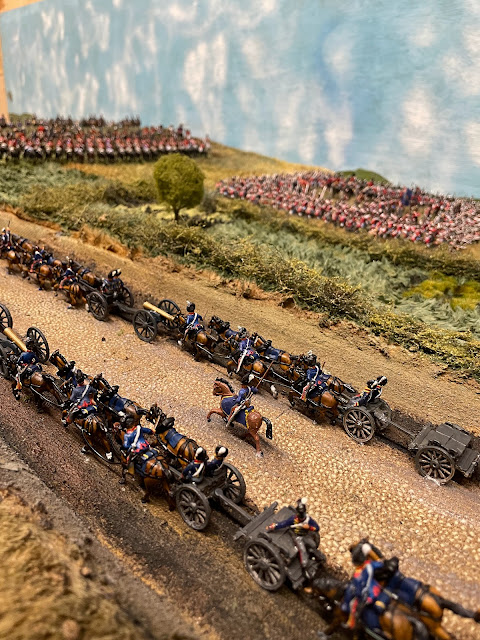




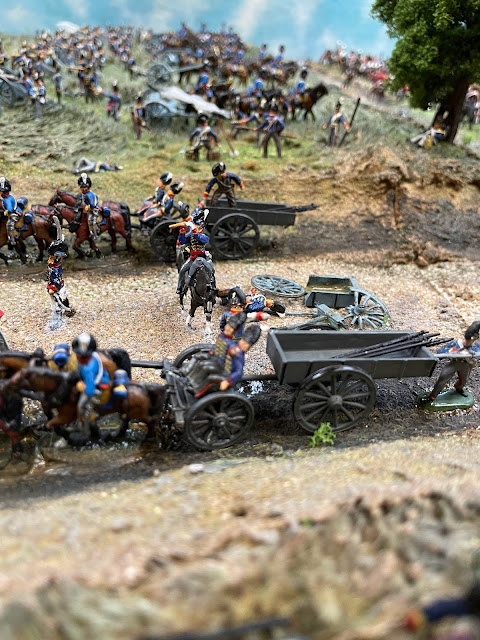




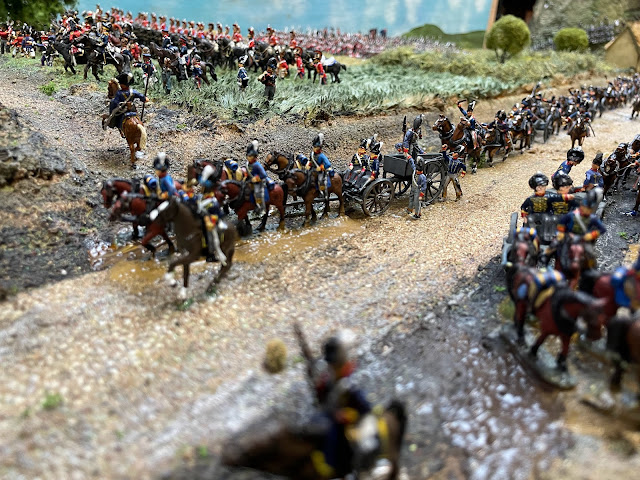

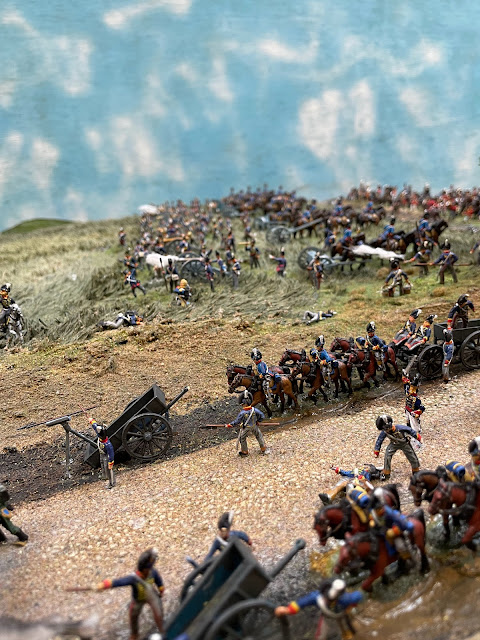
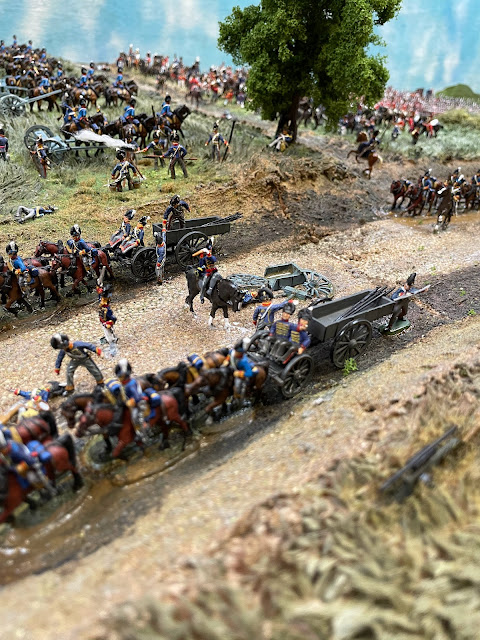

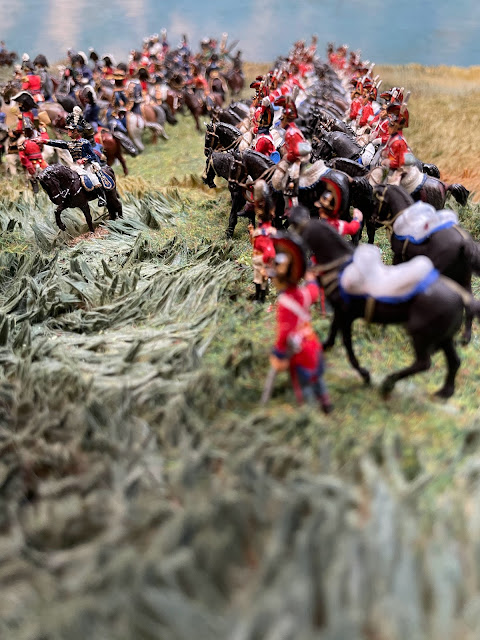

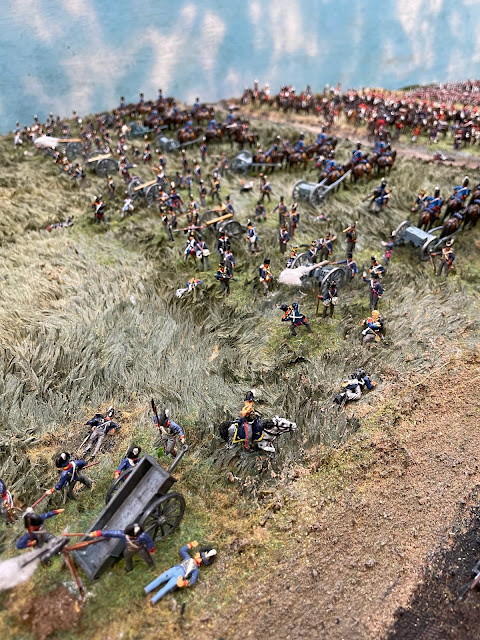
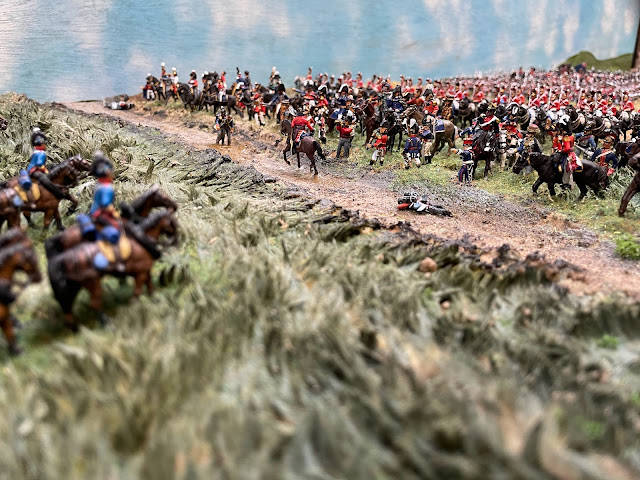


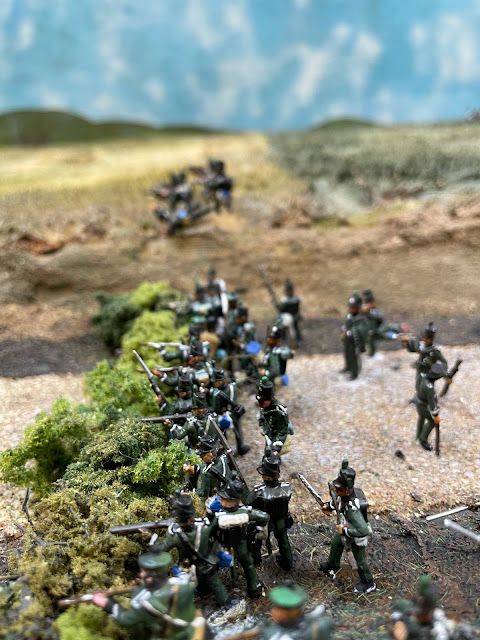

More on my blog here: http://generalpicton.blogspot.com
This is the last I'll be doing before my exhibition. Hope you like them!










 Moderator
Moderator